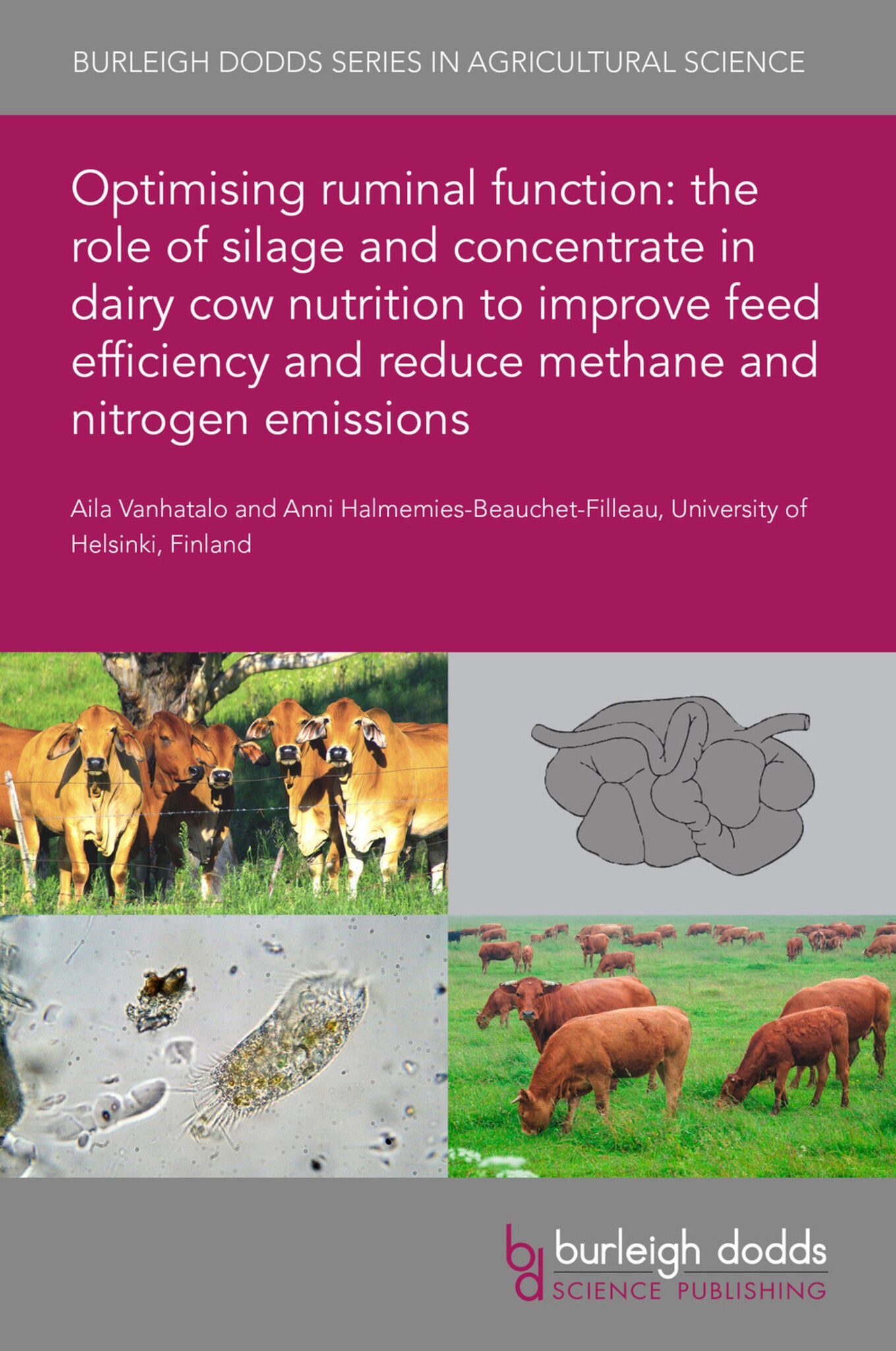We're sorry. An error has occurred
Please cancel or retry.
Optimising ruminal function: the role of silage and concentrate in dairy cow nutrition to improve feed efficiency and reduce methane and nitrogen emissions
Regular price
£25.00
Sale price
£25.00
Regular price
£25.00
Unit price
/
per
Sale
Sold out
Re-stocking soon
Ruminant farm animals contribute significantly to global greenhouse gas (GHG) emissions, but the emissions can be greatly reduced by nutrition. Sustainable dairy cow feeding strategy to mitigate GH...
Read More

Some error occured while loading the Quick View. Please close the Quick View and try reloading the page.
Couldn't load pickup availability
- Format:
-
22 June 2020

Ruminant farm animals contribute significantly to global greenhouse gas (GHG) emissions, but the emissions can be greatly reduced by nutrition. Sustainable dairy cow feeding strategy to mitigate GHG and N emissions should make the most of the unique ability of ruminants to convert local human-inedible biomass to high-quality dairy foods. In this chapter, we review the potential of silage plant species (grass, forage legumes, maize) and stage of maturity of silage crops as well as dietary forage to concentrate ratio to reduce environmental footprint of dairy cows in the temperate areas without compromising animal performance. Dairy cow performance is examined in terms of feed intake, milk yield, feed and N efficiency, and methane emission intensity. The role of concentrate composition (lipids, carbohydrates and protein) is also evaluated. As a case study, the potential of milled rapeseed to reduce environmental footprint of grass silage-based diet is evaluated in practical farm conditions.

Price: £25.00
Publisher: Burleigh Dodds Science Publishing
Imprint: Burleigh Dodds Science Publishing
Series: Burleigh Dodds Series in Agricultural Science
Publication Date:
22 June 2020
ISBN: 9781786768087
Format: eBook
BISACs:
TECHNOLOGY & ENGINEERING / Agriculture / Animal Husbandry, Dairy farming, TECHNOLOGY & ENGINEERING / Agriculture / Sustainable Agriculture, Sustainable agriculture, Animal husbandry

1 Introduction 2 Role of silage: grass, forage legumes and maize 3 Role of concentrates: lipids, carbohydrates and protein 4 Case study: Effects of milled rapeseed on milk production, milk fat composition and ruminal CH4 emissions of dairy cows in practical farm conditions 5 Summary and future trends 6 Where to look for further information 7 References



